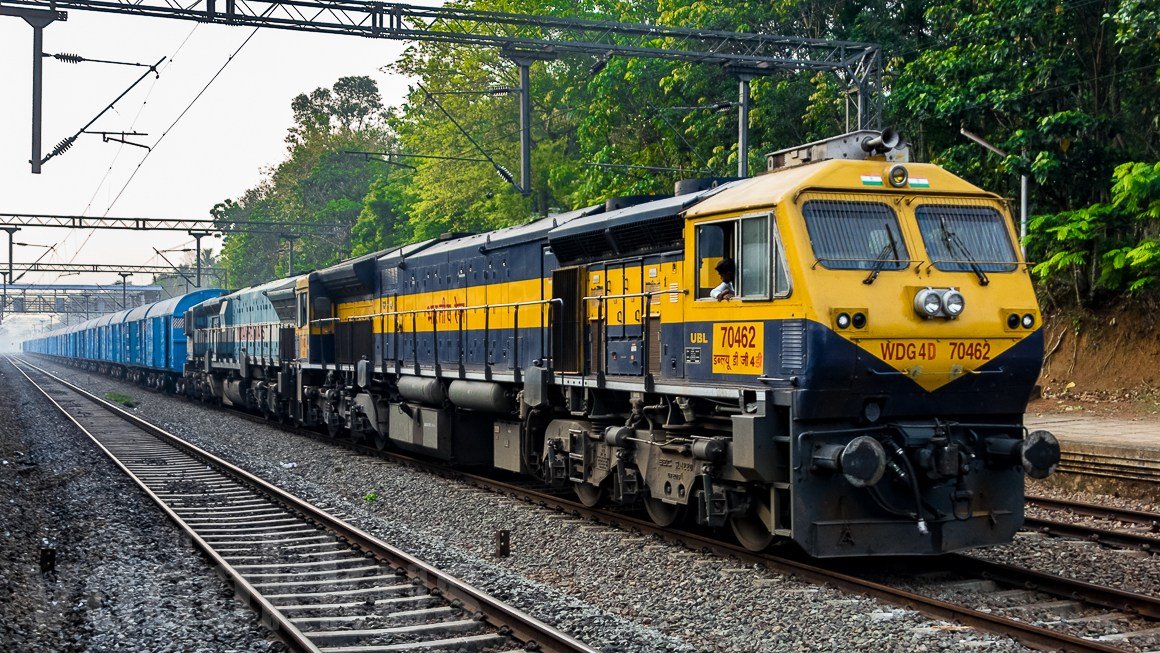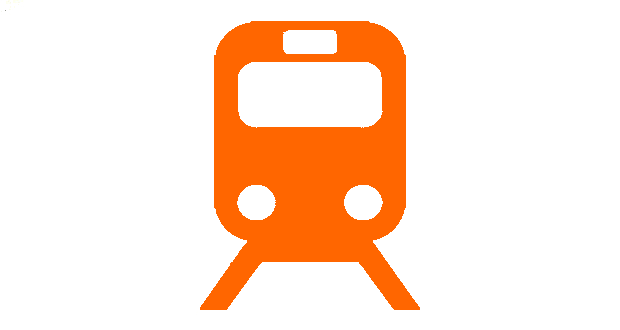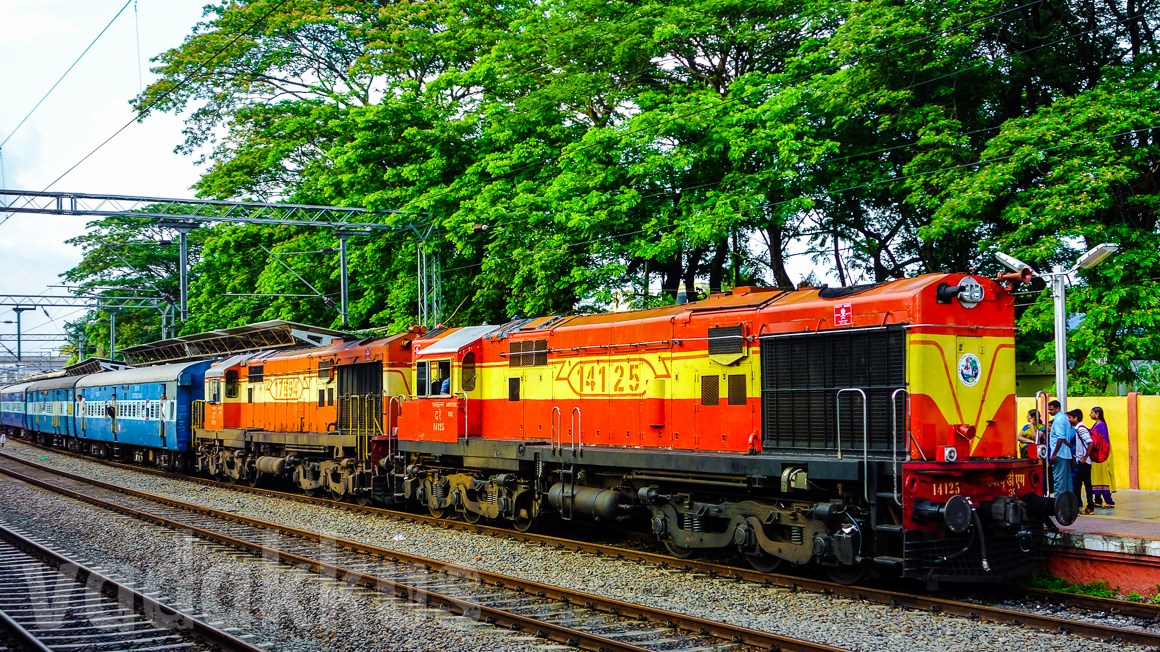The State of the Railways in Kerala: Track Infrastructure

We all know that Kerala has the worst railway infrastructure in India. We also know the reasons for this to be the usual suspects of neglect, discrimination and apathy by the powers that are. But in addition to all this, a much not-widely discussed reason for this deterioration is the way (or lack of) how critical railway infrastructure is created and maintained in the state. Most of the problems being faced by the railways (in Kerala) – the slow running, the late running, the inability to run more trains, are all symptoms of real, deeply structural physical problems. The very foundations of the railway infrastructure – the permanent way – itself is highly decayed. Tracks simply are not designed or built to make them capable of carrying all that traffic or to help trains attain or maintain speed. Of course, this is nothing unique to Kerala, but the difference is that while there are regular steps being taken to solve these problems in other places, none of that sort happens on that southwestern strip of land.
Only a strong, stable and robustly built permanent way and precisely engineered tracks will be able to withstand all the forces acting on it and allow trains to run confidently and smoothly at high speeds. All the rest, though important, is still only paint. Your railway system could boast of most modern, plush, gleaming coaches that put European trains to shame, stations that give Changi airport a run for its money, signalling systems powered by artificial intelligence, and other cutting-edge high-tech paraphernalia, but all these will do no good if the tracks and allied infrastructure are poorly built. What is the use of a garage full of Mercedes and Lamborghinis if the roads are full of potholes? What good will a fleet of A380s do if your runways don’t support them? Trains can run at great speeds only if the tracks strong and solidly built.
Track Engineering Infrastructure
The speeds its tracks can safely support are the best indicator of the health of a railway system. In China, Europe and Japan, futuristic looking trains coolly zip along solid-tracks at 320 kph or more. The rides are so silky and buttery smooth with no hint of any vibration or swaying or shaking that you can famously balance a coin on their windowsills that it might seem they are running on MAGLEV air cushions. However, those high speed trains run the same way how our trains do – steel wheels on steel rails. Their rides are smooth because the guiding path of the train, the railway track, is perfectly engineered to be level, smooth and straight to the millimeter at all times. Trains can confidently stay on this track at any speed without any danger of going off it. This is where we are lacking.
The typical railway track in India and particularly in Kerala is anything but level and straight. It is quite the opposite. If you a take a straight, long-range view of a railway track (in a zoomed-in photograph, for instance), you will see that the tracks are not perfectly even parallel lines but look kind of deformed as in being uneven, misaligned, bucked and distorted. They seem to have bumps, dips and bends, rising and falling like roller coaster tracks following the ups and downs of the ground. And this is evidenced by the “swaying” and “jumping” of trains as they go over them even at speeds of 60 kph, so that forget balancing coins, we can’t even walk properly. And it goes without saying that speeds beyond a limit will not be possible on our tracks as these oscillations can make trains dangerously unstable. This is one reason why it is so very hard and expensive to increase train speeds in India by even just 10 or 20 kph as we have seen with the example of Gatimaan Express. Tracks have to be re-engineered or even relaid eliminating all their flaws for them to support such speeds. Tracks are deformed because of many reasons, including the use of old 52-kg rails instead of 60-kg rails, mixed traffic of light passenger trains and heavy goods trains and so on, but the main reason is how tracks are built. This is especially worse in Kerala because of the peculiarities of its terrain.
Track-Bed Engineering
A good reason for the weak conditions of railway tracks and roads in Kerala is its geography. An ex-member of the railway board has recently pointed out that if the permanent way for Kerala has to remain strong, it has to be engineered to withstand the terrain on which it is built. The ground upon which tracks are laid is not hard-packed soil or rocky formations or even land conditioned by human habitation for centuries. Kerala has been a rain-fed region for many millennia, and hence most of coastal and central parts of the state is a soggy, clayey mess of vast swampy, marshy agglomerations fed by a large number of rivers, streams and other water bodies. Of course, the railways cannot be blamed for all this, but it can be for not engineering and building tracks to survive and suit this geography in a sustainable way. They build and repair their permanent way using the same one-size-fits-all approach Indian Railways is so famous for. They use the same old fashioned way our ancestors have been doing for times immemorial. They probably just remove vegetation, dump tonnes of earth into the swamp and pack and level it to create the track bed on which ballast, sleepers and rails are laid. And most of this work is still being carried out by human muscle. Aren’t some kind of machines used in the rest of the country? There does not seem to be any extra thought going into engineering railway tracks for waterlogged places. In addition to the numerous gradients, bridges and curves, all of which limit speeds of trains, it causes deformation of the tracks which is our major problem here.

So, what happens when the foundation of the tracks rest on top of what is actually mud and water, or earth that has been waterlogged ever since the landscape was formed? Pretty evident, right? Over time the weight of around a hundred trains of a couple of thousand tons running on the tracks everyday causes the permanent way or parts of it inevitably and very slowly sink into the mud. This is called track sinkage and is an actual technical problem, regularly cited as a reason for speed restrictions. Trains obviously will not be able to run at high speeds on irregular tracks. Over time, the tracks will remain level only where they were laid on solid surfaces like on concrete bridges and culverts, for instance. This results in a comical situation where the track ends up like a clothesline strung over bridges, sagging over its either side, which you can actually observe especially in Thiruvananthapuram division. There will be a “jump” just before the train enters the bridge and a “dip” just after it leaves it which can be clearly felt by passengers. It is like a speed breaker, for which trains have to slow down. And there is such a “speed bump” for every small culvert. In addition, heavy traffic of mixed type with little to no maintenance and poor quality 52 kg rails have created the misaligned track. This can be evidenced by the video showing a section of the 40-years old permanent way on the Thiruvalla-Chengannur stretch of the Thiruvananthapuram division.
See, it is quite simple. Just like we can’t drive fast over uneven and broken roads, trains cannot run fast on bad tracks laid on uneven ground. In short, as the track is built on weak and unstable, shifting ground, it over time becomes uneven and undulated, making high-speed runs of any kind impossible. This is why while trains easily and smoothly run at 110-130 kph elsewhere in the country, in Kerala trains wouldn’t dare go above 70-80 kph generally and even end up meandering at 40-50 kph speeds. The tracks are way too old, weak, broken and sinking to take any more load or even support existing trains, forget adding more trains or coaches. It would seem to be obvious that all these challenges would call into account regular and careful maintenance of tracks. Well, the truth is that sadly nobody is bothered about that as well.
Defective Tracks
On the night of August 28, 2016, thirteen coaches of the 16348 Mangalore-Thiruvananthapuram Central Express derailed near Karukutty on the Thrissur-Ernakulam section. Miraculously, no one was even injured. The 12696 Thiruvananthapuram-Chennai Superfast had just (a minute ago) passed by on the adjacent track narrowly missed colliding with the derailed train. And then, only 23 days later, four wagons of a fully laden freight train again derailed and tumbled down a short embankment near Karunagappally on the Kayamkulam-Kollam section. It was by sheer luck that those wagons narrowly missed some houses. In addition to these two, there were also a string of minor derailments and accidents of locos, track machines and MEMUs. These two major incidents within a month rattled the railway establishment and bringing to light the sad state of the railway infrastructure was in the state. And an investigation revealed that the culprit behind the accident was the railway track itself. The cause of the derailment was linked to a defective piece of railway track that was not replaced for possibly, decades.
Later on, shocking reports revealed that the Thiruvananthapuram division had defective tracks at around 200 spots on its 625 km of route track, including at the accident spot. The engineering department scrambled to issue caution orders (go slow at 15/30 kph) at all these spots. Already unable to keep speed up thanks to curves, terrain and stoppages, trains now had now to slow down to a 30-15 kph crawl every 5 kilometres. This is how they started running one hour late by the time they cover 30 kilometres. As inspections continued and more and more defective spots were identified, they absolutely decided against taking any chances with the speed of the trains. Stung by these revelations and ensuing harsh criticism, the railway board directly ordered the replacement of all tracks in the state on an urgent basis. This process has been continuing for the past three years with no sign of abating. The process is tough since railway lines in the state see a train every 10 minutes on an average. In their general high-handed aloofness, divisional authorities are not bothered to confirm as to when all this work will end and what speeds trains will run on replaced tracks after the “renewal” is complete.

So, why did the tracks have so many defects? Because they weren’t replaced for many years. Not for three or five or even ten years, but most railway tracks in Kerala, the rails and sleepers, weren’t replaced in 12 to 25 years! Imagine, these rails had been sitting there for more than a decade or two, bearing loads of some fifty trains of 1000 tons running up and down over them every day, in the constant rain and humidity, in places that are in many cases swampy land. The track infrastructure was literally left to rot. For some of you reading this, those same rails were present there before you were even born. This is kind of apathy can be nothing but deeply criminal! Well, why weren’t tracks replaced? They weren’t because of the usual reasons, we saw in the previous chapters, politics and bureaucracy. Track renewal isn’t news that will grab eyeballs at the level of running new trains or allocation of new stoppages. Operations and passengers complain of it slowing trains down. Allocation of rails and sleepers and TRT machines required for track renewal costs money, time and resources, and so on. It is all about priorities.
Anyway, this “track renewal” has been going on as a never ending process ever since the accidents. The engineering department imposes speed limits citing weak track and repairs, while operations gleefully cancel and regulate trains, some trains have been “temporarily” cancelled for around a year now. They do not give any indication as of when these works will be completed or what will happen when they are; for instance at which speeds trains will run when these works get over, whenever that would be. It is also unknown whether “track renewal” means just replacing old sleepers and rails with new ones, or if it means radical re-engineering of tracks to make them withstand the challenges of Kerala’s terrain. If it is not the latter, it might mean that unfortunately the all “renewal” will mean useless in a couple of years. At the end of all this bureaucratic muddle and drama, it is the common commuter who is suffering as her train now loses one minute for every minute it runs. And this deficiency in infrastructure is not limited to tracks and bridges, but to everything from stations to coaches as well. The series will continue.




